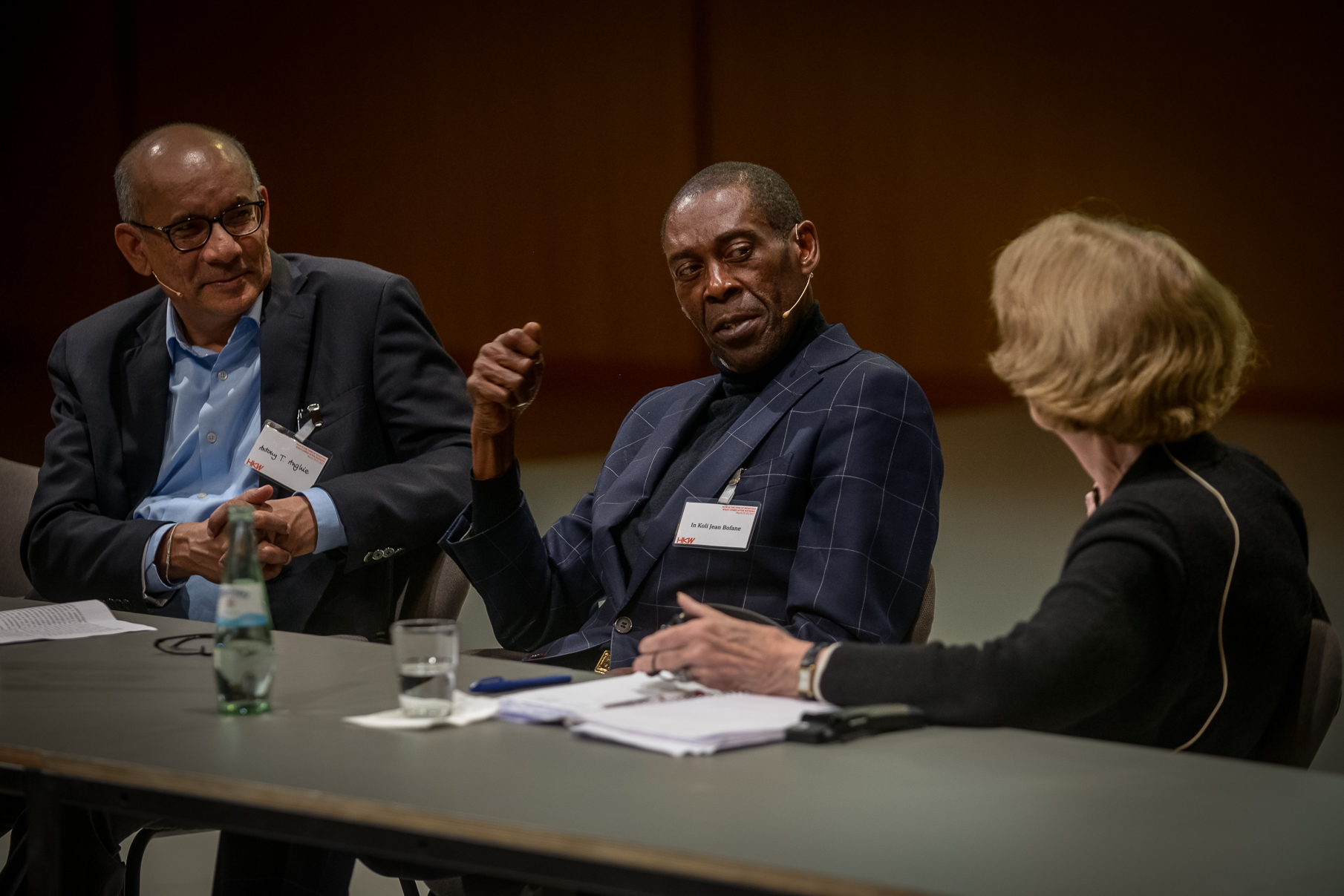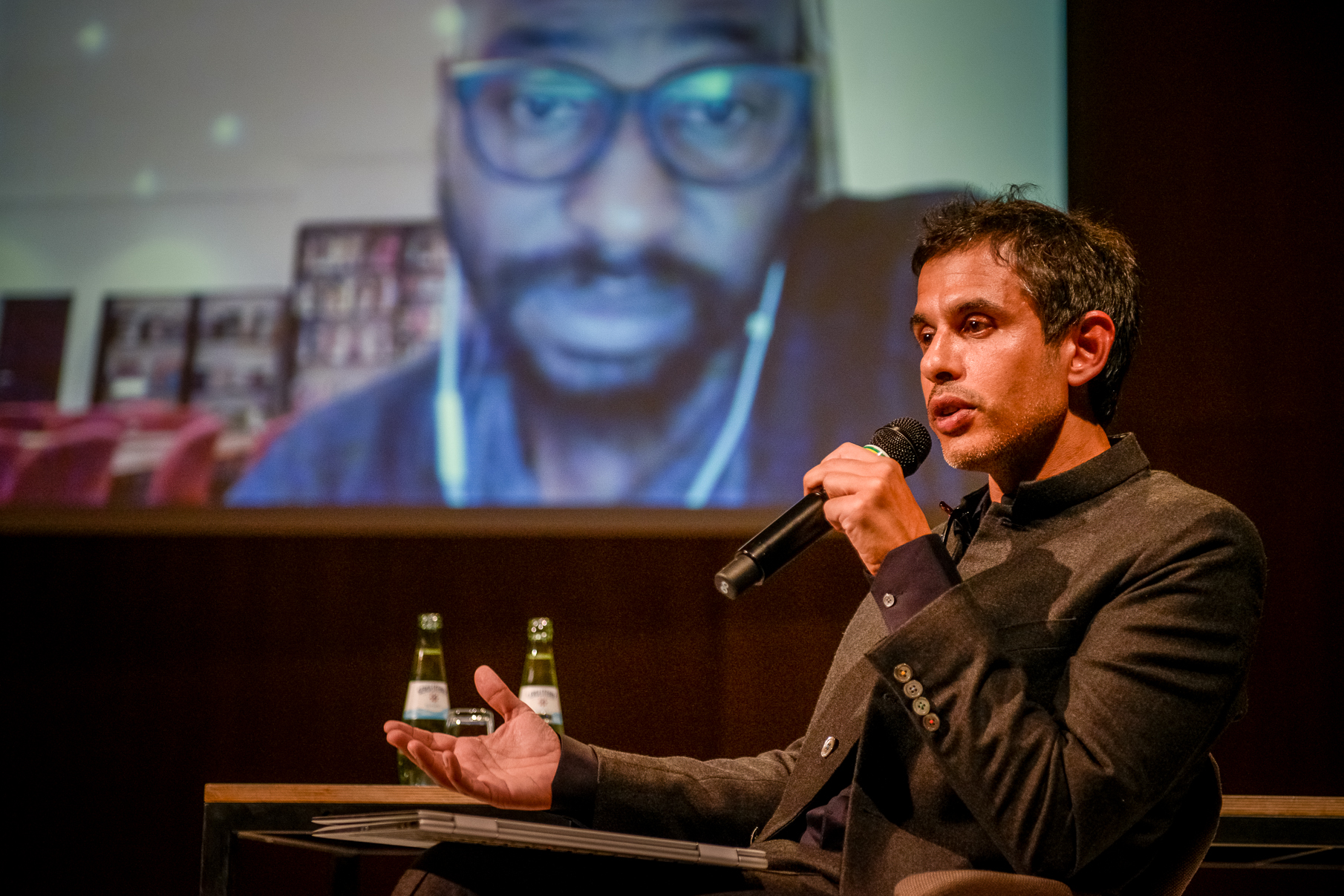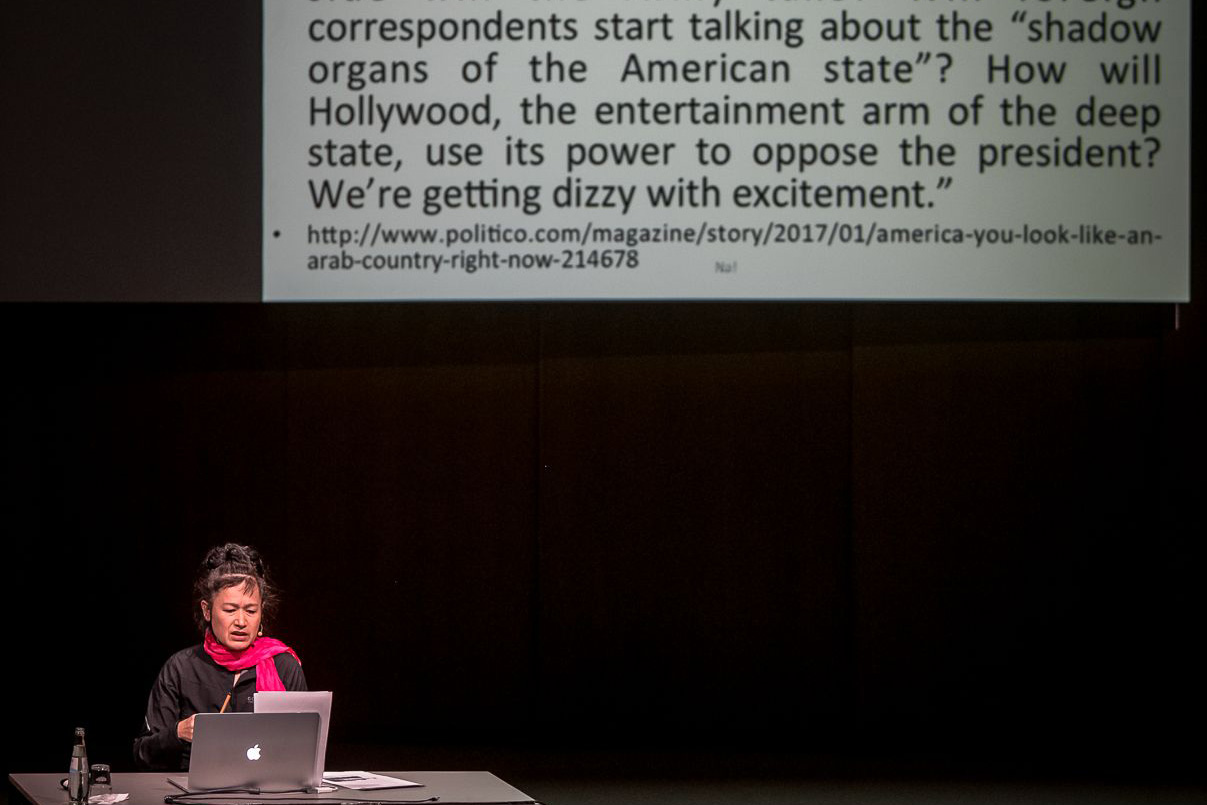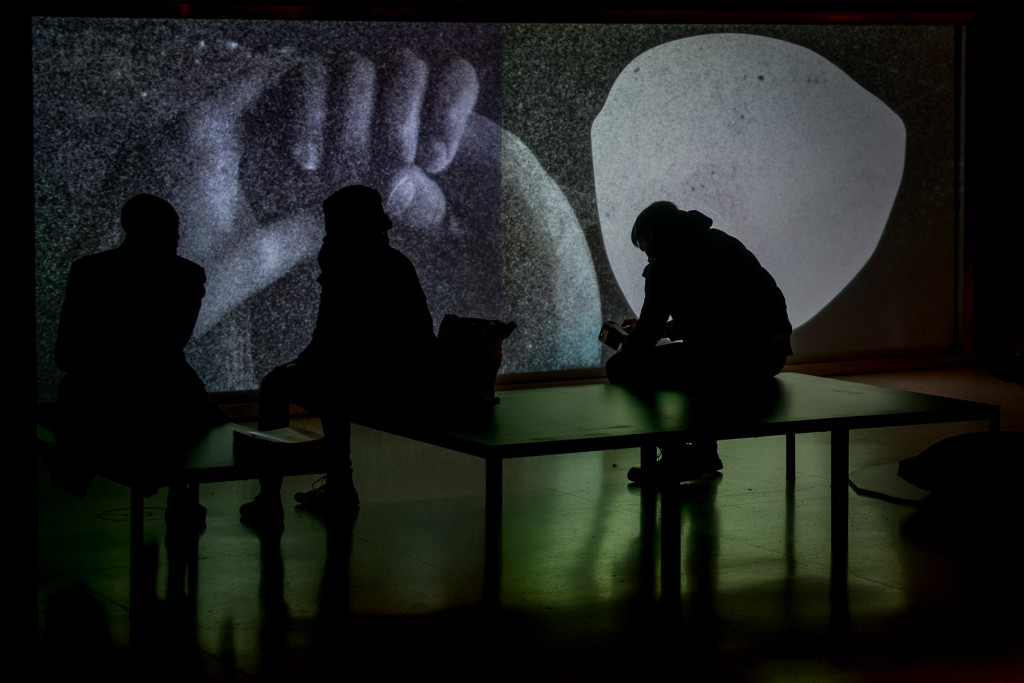Monsters fascinate and frighten us because they’re alien and familiar at the same time. As hybrid creatures, they are allegories of the zone where the human and the horrible meet. On ancient nautical charts, monsters mark the boundaries and transit zones of the known world. The territories of today’s nation states, however, seamlessly abut one another. And still, the monstrous has not been overcome. It spawns financial crises and neoconservative movements, fuels wars over commodities and triggers migration flows. It manifests itself in Islamist extremism and the suspension of fundamental rights in the so-called war on terror. The asymmetries in the international state and legal system, which exist despite – or precisely because of – the establishment of universal civilization standards, are undeniable. Migrants are caught increasingly between workforce mobility, which global capital demands, and the enforcement of authoritarian state monopolies with tightening border regimes, surveillance and control technologies.
Now is the Time of Monsters: What Comes After Nations? envisioned the Paris Peace Conference of 1919 as a key date to understand today’s nation-state system. The world was reorganized in the Palace of Versailles in the Hall of Mirrors. Even the seating arrangement at the U-shaped table indicated who was allowed to decide the shattering of empires and the recognition of new nations. Rana Dasgupta, Nanna Heidenreich and Katrin Klingan, the curators of this HKW program, invoked the image of the conference table in varying arrangements in the event space, thus also visually addressing the tilting moments of developments and alternative models of transnational, socialist, anti-colonial and Pan-Islamic orders.
Artist Christian Nyampeta juxtaposed questions about the reconfiguration of the nation-state structure with his multipart installation From Left to Night, which, starting from a time axis on the so-called standard of civilization, negotiates the role of the artist in relation to the national project. In a fictional trial in the hereafter, poet Christopher Okigbo stands accused of betraying his responsibility as an artist to aesthetic universalism because he participated in the national struggle of Biafra and died in the process. Can art, Nyampeta asks, be activated as a weapon in the fight against injustice? Can it be used as a method to counter (historical) violence?

Inherited terms and dispositives that continue to be employed were examined for their origins and narrow views as part of Now is the Time of Monsters. The legal scholar Lawrence Liang examined how maps prefigure our perceptions by using cartographic representations of South Asia, which allow a discussion of the role of migration by sea. At the time of the British Empire, migrant workers circulated between the tea-growing areas of India and Sri Lanka and the rubber plantations in Malaysia and Burma. This mobility came to an abrupt end when independent nation states emerged from the British colonial empire. Another map shows South Asia turned upside down so that the Hindu nationalists’ allegory of “Mother India” no longer fits into the outlines of the country. The inversion of the iconic image reveals that the nation is “not a natural and immutable object, but is steadily constructed by different ideologies.”
Historian Cemil Aydin referred to the collapse of the Ottoman Empire between 1914 and 1924. The father of the segregation between the Greek and Turkish communities was the Norwegian naturalist and diplomat Fridtjof Nansen who, after the Greco-Turkish War (1919–22), initiated talks on the repatriation of Greek refugees. A population exchange was agreed in the 1923 Treaty of Lausanne as a means of “peacefully” resolving conflicts of multiethnic and religious societies: 1.5 million Greeks came to Greece on the same routes as today’s Syrian refugees; 500,000 Muslims were expelled to Turkey. The idea of the homogeneous nation, which was to replace the old empires with their heterogeneous populations, was enthroned as the paradigm of modernity.
The same logic is in use to this day to postulate a “clash of civilizations” between the Christian and Muslim worlds. In the countries of arrival, migrants are seen as a threat to alleged national unity and are discriminated against by means of legal exclusion mechanisms. Aydin contradicted this one-sided view: The chiefs of the Ottoman Empire may have been Muslim sultans, but Armenian and Christian officials, the “best of the best,” were also on their payrolls. In India’s struggle for freedom from the British, the Ottoman Empire, therefore, was considered an example of a functioning, multireligious state.
Differences between individual countries existing today can be traced back to the origins of international law, which was created on the basis of natural law by European thinkers such as Francisco de Vitoria starting in the 15th century. At the beginning of this legal tradition, only a few countries met the standards of the “civilized” world, according to legal scholar Antony T. Anghie. During the period of colonization and emerging world trade, European nations imposed a legal framework that measured the development of other countries. As pointed out by David Scott, it wasn’t until 1960 that this was explicitly opposed by UN General Assembly Resolution 1514, which declared that the state of development of a country should no longer be a pretext to deny it independence. However, the distinction between more and less advanced cultures from a Western perspective was already inscribed in the interior of the colonies. The artist Brigitta Kuster demonstrated this by means of the Code de l’indigénat, which denied the indigenous peoples of French overseas territories full civil rights. A conceptual critique by Anghie traced the lines of continuity ranging from dichotomies such as that of civilization versus barbarism to democratic versus non-democratic, liberal versus non-liberal, and contemporary terms such as “good governance” (as a condition for aid from international organizations). We are in a limbo today, Anghie said, in which we don’t know whether the permanent state of emergency in the “war on terror” and atrocities such as those committed in Abu Ghraib prison are aberrations or part of the system: “We are committing barbarism in the name of civilization.”

“After the fall of communism, have we not too easily abandoned the analytical tools of Marxism?” wondered writer Slavenka Drakulić. What concepts of historical materialism are still productive today? For even though nations have been described as “imagined communities” with “invented traditions” ever since Benedict Anderson and Eric Hobsbawm, their exclusion mechanisms are powerful, as most recently demonstrated by US President Donald Trump’s “Muslim Ban,” which led to the detainment of people in transit for having the “wrong” passports. Anthropologist Arjun Appadurai attributes the reemergence of cultural struggles thought to have been overcome – on marriage, family, women’s clothing – to the weaknesses of nation states. As a result of free trade agreements and the growing power of global corporations, governments are losing control over the economy, he said. What remains, besides identity politics and isolation from the “foreign”? The sociologist Boaventura de Sousa Santos, therefore, called for an examination of the experiences of self-government in the Kurdish region of Rojava in northeastern Syria and the Zapatista communities in the Mexican state of Chiapas – a glimmer of hope from the global South against the no-alternative mantra and the blind spots of the Western perspective on its own values’ universality.
Chiapas is also the starting point for a synchronous movement of goods and migrants. The name of the freight train on which people from Central America and the Caribbean travel to the US border is “La Bestia.” The sociologist Avery F. Gordon recalled how migratory movements could also trigger progressive developments: The mass exodus of enslaved people paralyzed the capitalist plantation system in the US. The “runaway” communities paved the way for the beginning of self-emancipation by the black population and the abolition of slavery.

What new forms can art generate with regard to the transformation of language? To what prerequisites for new subjectivities and world orders do they lead? In Hito Steyerl’s lecture, “Gott ist doof?” On Artificial Stupidity, Roko’s basilisk stands for a future in which the nation states have failed. United with the elites, corporations have taken the helm – as a state with parallel institutions. The artist and filmmaker associatively portrayed a scenario that describes how the exception has become the rule at the edges of the Western world: rocket science has long since degenerated into racket science. Such moments of poetic condensation through memes and metonymies raise hopes for the resistant potential of a language that transcends the boundaries of genres and disciplines, a language that has the potential to break through the porous narratives of nation and national state.
Similarly reverting to academia, Internet and pop culture, the writer Ann Cotten called for the creation of (“Afro-futurist”) language. Previously, artist Kudzanai Chiurai had bemoaned, “We have never lived in an Afro-future!” Africans have instead focused on postcolonialism and postapartheid, forgetting that overcoming the colonial era is the responsibility of the colonizers. From this he concluded, “We are living in a colonial future.” The “utilizable” things of the past, such as the ancient knowledge stored in indigenous languages, would have to be brought out: “We gave the stars names.”
